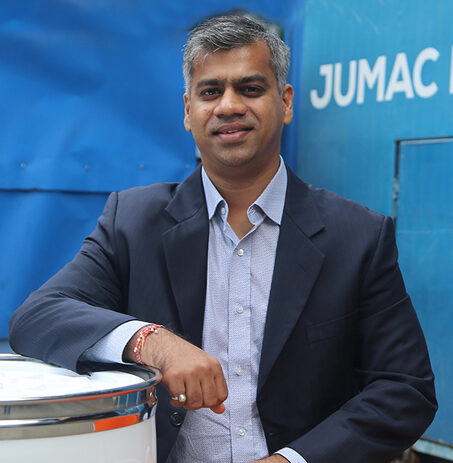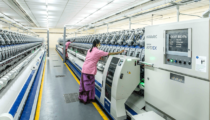With nearly 5% share in the worldwide textile & apparel…

Home Textile Industry Trends to Look Forward To In 2022
The Indian home textiles sector – which lies right at the core of the technical textiles industry – is growing at a rapid pace. While many other sectors are struggling to bounce back from pandemic-induced slowdowns, the exports of Indian home textiles grew at an impressive 9% last year. The growing average income levels, together with the usage of technologically advanced yarn machinery, spinning can & related accessories, accelerated urbanisation and socioeconomic growth are all serving as key drivers for taking this sector to the next level. In what follows, we will take a look at some major trends from the home textile industry for 2022 and beyond:
The Indian Home Textile Sector Is Transforming
Over the last half a decade or so, the CAGR of the domestic textile industry has been more than 15%. This is a clear indication of accelerated growth. On top of that, qualitative changes are becoming increasingly apparent as well – with improved mill performance & efficiency, design evolutions and other enhancements. The industry benchmarks are changing, and the biggest players from this sector are focused on value-addition.
Scopes Of Home Textile Production Are Expanding
From bedspreads and curtains, to upholstery items, pillow covers, and a lot more – a truly vast range of home textile products are regularly being manufactured in India. In 2022 and beyond, more product varieties, with different quality, texture and design, are expected to become available. Panipat, Karur, Chennai, Cannanore and Delhi are some of the biggest home textile hubs in the country. More such hubs should emerge over the next few quarters.
Markets Are Recovering From The Global Pandemic
With lockdowns and restrictions on trading activities, the Indian home textile market (like practically all other business sectors) had hit a roadblock. In the post-pandemic world, manufacturers are reshuffling their day-to-day organisational activities – with particular emphasis on social distancing and (whenever possible) remote collaborations & working. Robust demand levels are also helping companies increase their scale of production and bolster the overall industry growth.
Growing Role Of Technology In Home Textile Manufacturing
Technology is playing a key role in driving up the productivity and efficiency levels of home textile manufacturers. Sophisticated mill machinery are being used, along with high-performance spinning can & accessories – that are designed with state-of-the-art features and capacities. With growth in the average purchasing power, the market penetration of branded products is going up, and smart technology is playing an important role in optimising production flows.
Favourable Government Policies Are Helping
The growth of the home textile sector of India is also being powered by assistance from the government. For example, the recently announced INR 10683 crore Production-linked Incentive (PLI) scheme will provide an important boost to the technical textile sector as a whole (and consequently, home textile production) over the next 5 years. The increasing investments – with availability of FDI at the core – is also aiding the growth of this industry.
Increased Focus On Quality
The more people stay at home, the higher is the time they get to identify and understand the home textiles they need. With no dearth of options, buying custom products has become easier than ever – and in order to stay ahead of the competition, manufacturers are focusing on supplying home textiles of optimal quality. Ensuring quicker turnaround times and faster ‘time-to-market’ is also being prioritized. The unwavering focus on quality is expected to gain in momentum in 2022 and beyond.
Employment Opportunities In The Home Textile Sector
The Indian textile sector has always been a source of employment for a large volume of skilled and unskilled labour from across the country. In 2022, such employment opportunities are all set to soar further – thanks to growing demands from worldwide customers, higher investments, and favourable government schemes (the Amended Technology Upgradation Fund Scheme (or, ATUFS) is an excellent example in this context). By the end of this year, the total job openings in this sector is projected to be around the 36 lakh mark.
Sustainability Is Firmly In Focus
In sync with global trends, environmental consciousness is growing across India as well. The demand for ‘sustainable textiles’ is at an all-time high. As such, home textile suppliers are putting prime emphasis on ensuring that their products do not cause environmental burdens in any way. Original equipment manufacturers (OEMs) and spinning can manufacturers are also using recyclable materials in the tools & accessories they supply to mills.
Spike In The Exports Of Indian Home Textiles
Nearly 60% of the total revenues from the home textile sector of India comes from exports. In FY22, these exports are expected to go up by a whopping 20% (in terms of revenue generated). As more and more global players are adopting the ‘Plus One’ strategy (alternatively, the ‘China Plus One’ strategy), Indian textile exporters are getting greater opportunities to expand their business. As production and exports are increasing, the average capacity utilisation of home textile manufacturers is going up too.
Growing Number Of Retailers And The Popularity Of E-Commerce Are Fueling Growth
The combination of relatively stable price levels of textile raw materials and the steadily rising demand figures (both in India and overseas) is facilitating the entry of more retailers in the home textile ecosystem of India. In addition, the surge in popularity of e-commerce is also pulling up the overall competitiveness and growth of the sector in a big way. On the back of robust top-line and bottom-line growth and backed by continuous R&D, the Indian home textile market will continue to grow exponentially in 2022 and later.
Compared to many other countries, the Indian home textiles market enjoys significant comparative advantages – both in terms of average production costs as well as availability of highly skilled manpower resources. Adoption of advanced spinning machinery, HDPE spinning can and other accessories is also growing exponentially, delivering further advantages. By constantly upgrading their production & supply infrastructure, and through maintaining a seamless balance of quality, design, quick turnaround times and competitive pricing, leading home textile manufacturers are indeed making a difference in taking the industry forward.

Passionate about transforming the industrial sector of textile and spinning industry with innovative solutions. Director at Jumac Manufacturing, leading spinning cans and accessories manufacturer and exporter from Kolkata, India.









